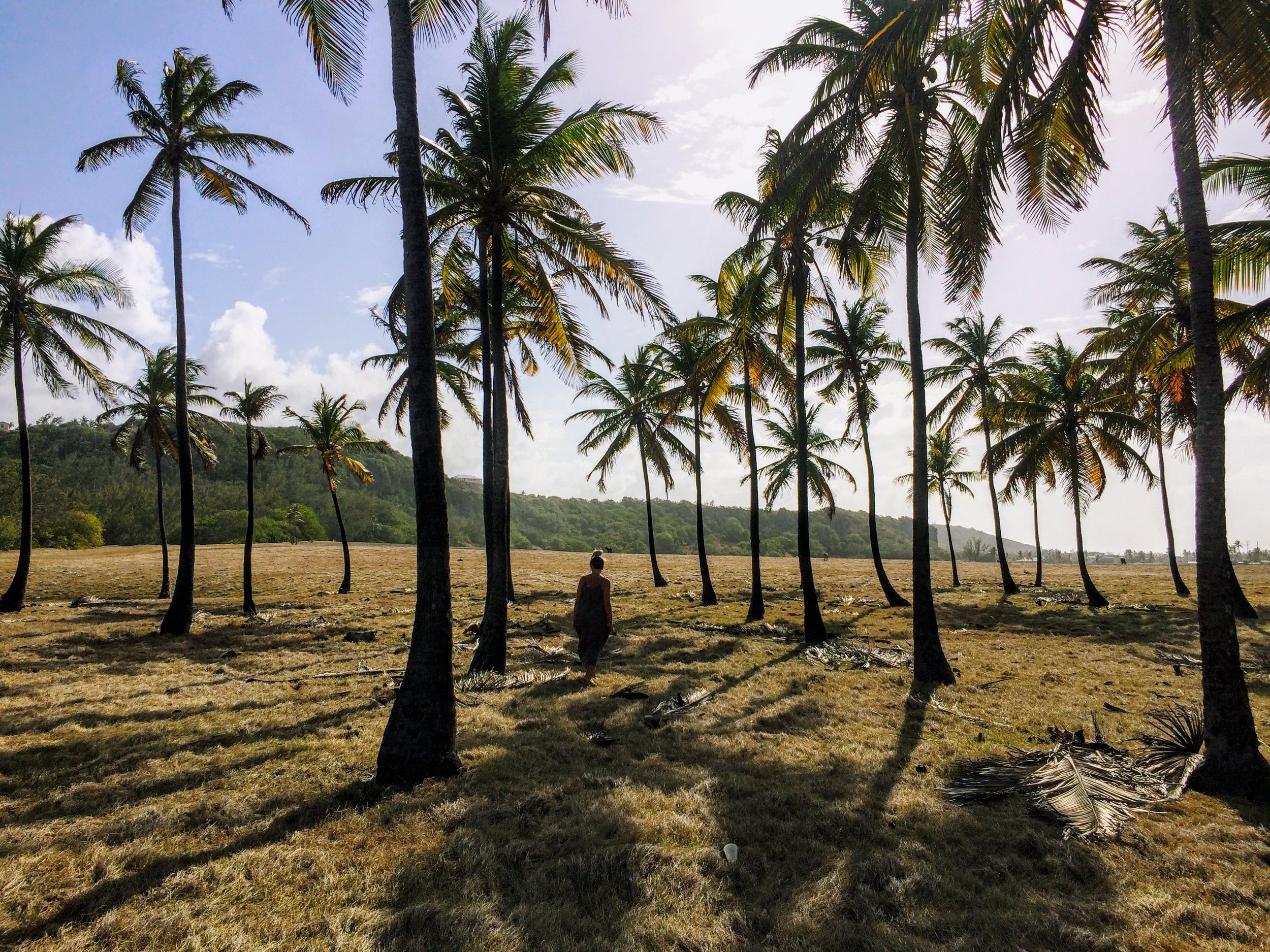Planning a trip to Barbados? 5 sustainable travel tips from a local
Travelling requires more planning, more effort (and resources!) than ever before. The pandemic has changed how we live and travel, and as travellers we are becoming a lot more discerning about when, how and if we fly.
Global travel trends show that travellers are also becoming more discerning about the impact they have on the places they visit, and visitors to Barbados are no exception.
I’m proud to be Bajan and I’m proud to call this island my home. For over 50 years, Barbados has welcomed visitors from all over the world.
Barbados remains one of the most iconic tropical holiday destinations worldwide, in large part due to our beautiful beaches, low crime rates, hospitality and consistent weather. With the Barbados tourism product continuously changing and adapting to suit new global travel tastes, trends and protocols, there are more ways than ever before to reduce our impact when visiting the island.
As a local Barbadian, born and raised, I feel a deep rooted sense of responsibility to continuously highlight social, environmental issues in the island, while also discussing and being a part of the solutions and presenting new ideas.
There are a number of ways in which we can make a positive impact as individuals, and it is our responsibility as Bajans to continuously remind ourselves of that, while also making it as easy as possible for visitors to follow suit. Many visitors are unaware of how much impact their travel decisions can have on the destination that they are visiting.
First, we must define what sustainable tourism really means.
“Sustainable tourism is a way to maximize social and economic benefits to Barbados communities and businesses while respecting, nourishing, preserving and enhancing Barbados natural, cultural and human assets. ”
With that in mind, here are my top 5 sustainable travel tips when visiting Barbados:
Tread Lightly
While we encourage you to explore, enjoy and experience the diverse environments in Barbados, it is important to recognise that our our ecosystems are fragile. There are a number of ways in which you can respectfully enjoy our environments: hiking through gullies with a local hiking group; swimming over our reefs (but not touching anything), planting a tree through a local NGO; and even planting coral in a nursery with a local dive club. You’ll learn a lot about the island’s biodiversity and interact with scientists in a way you may never had the opportunity to before.
Stay Local
There are so many locally owned accommodations in Barbados, from boutique hotels to Airbnbs. By staying somewhere that is locally owned, you will have a direct impact on the local economy and local families. Thinking carefully about how you spend your money will help to avoid economic leakage, which is when money leaves the host country (usually through multi national organisations) and ends up elsewhere.
Leave no trace
Barbados has had a national ban on certain single use plastics in place since 2019. However, it is also your responsibility as a visitor to do your part. Avoid plastic water bottles by bringing your own bottle that you can refill (our tap water is perfectly safe to drink); bring your own reusable bag to the shops; and of course, skip the straw wherever possible (even if they’re made from biodegradable material) Unfortunately we do not have the infrastructure required for commercial composting so “100% compostable” and “Biodegradable” materials still take decades to break down in our local landfill.
Enjoy ethical animal encounters
There are so many possibilities for animal encounters in Barbados! From the Barbados green monkeys to swimming with sea turtles, and local reptiles, there is no shortage of wildlife in the island. I encourage you to seek out animal experiences where the animals are in their natural habitat. Witnessing sea turtle hatchlings being released into the sea, under the supervision and management of the team at Barbados Sea Turtle Project, is a truly magical experience.
However, please:
Do not touch or force animals to do anything that is not natural to them.
Do not take photos with monkeys, especially when they are being paraded on beaches or at events. You can take photos of the monkeys from a safe distance.
Do not touch sea turtles, or chase them for a photo. There are a number of boat operators/catamaran cruises that do this, but just don’t take their word for it when they tell you that it’s ok.
Do not touch or pick up starfish.
For further information you can read my blog posts on ethical animal encounters and the Barbados green monkey.
Eat local food
Eating local is one of the easiest ways to connect with Bajan culture. Not only will you reap the nutritional benefits of using local fruit, vegetables and products, you’ll also be supporting the local economy and exposing your taste buds to new experiences.
For example, there is a plethora of sustainable fish species out there, each with distinct flavours and textures. Slow Food Barbados has a list of sustainable seafood alternatives to the popular (and very unsustainable) marlin in their Barbados Sustainable Seafood Guide, which is free to download on their website. They also share a seasonal fruit calendar every month, which shows a surprising variety of fruit available here in Barbados. Some of my favourite local dishes include pudding and souse, Caribbean lobster (pictured), flying fish (When it’s in season) and pepperpot.
These are just five simple steps that you can take towards becoming a more sustainable traveller in Barbados. Combined, these steps add up to make a big impact on our island when visiting and ensure we leave a beautiful Barbados for Barbadians, and future travellers, to enjoy.




